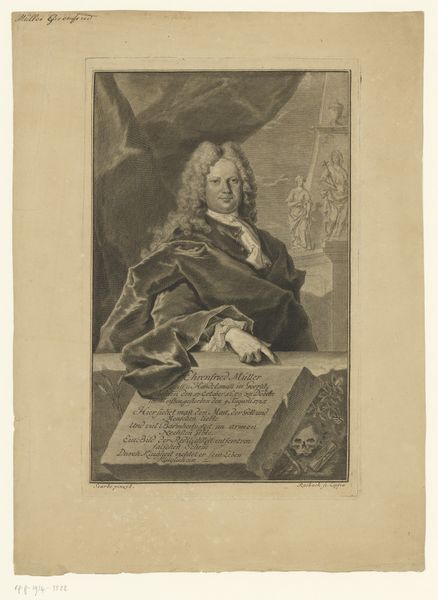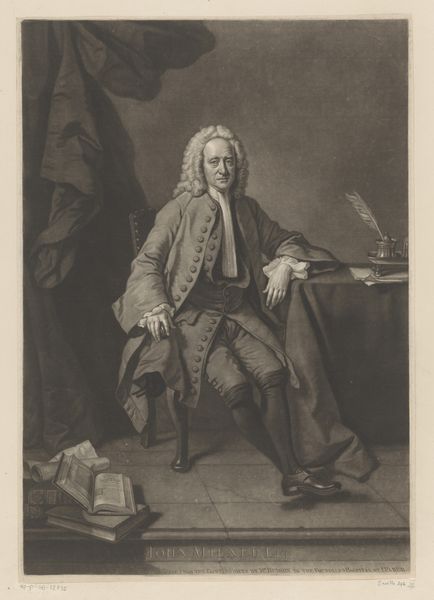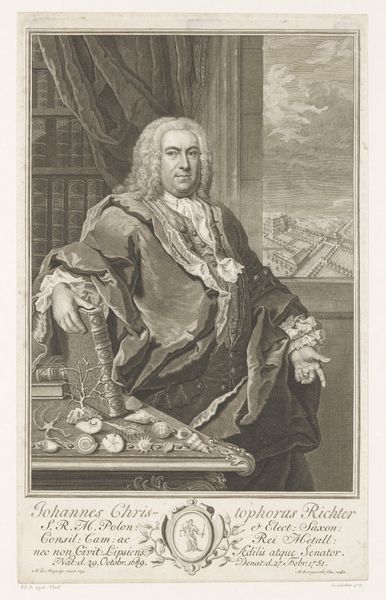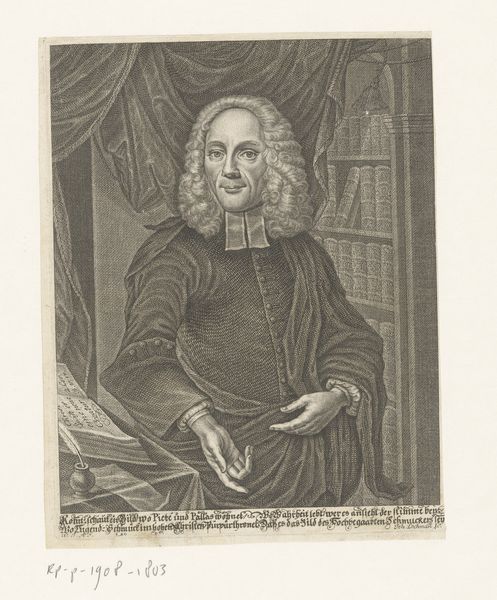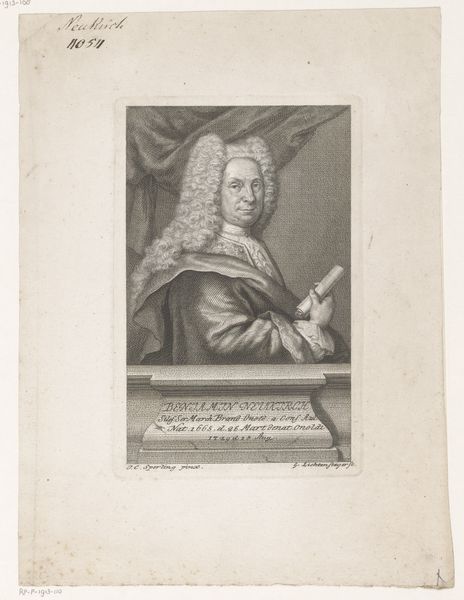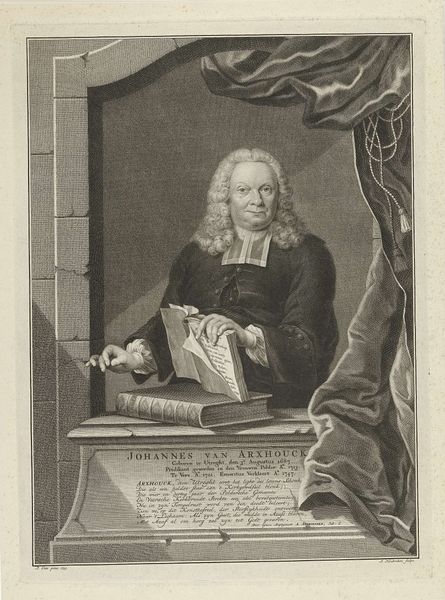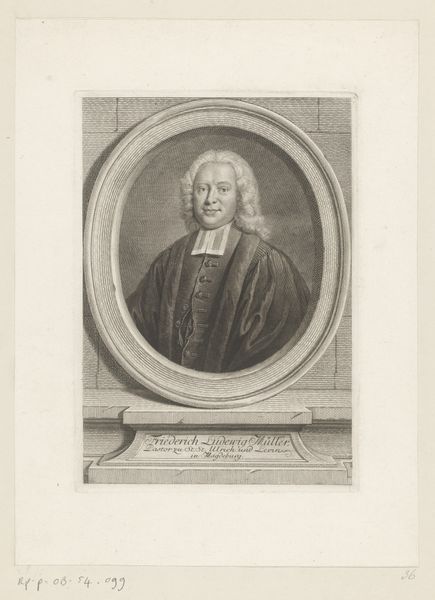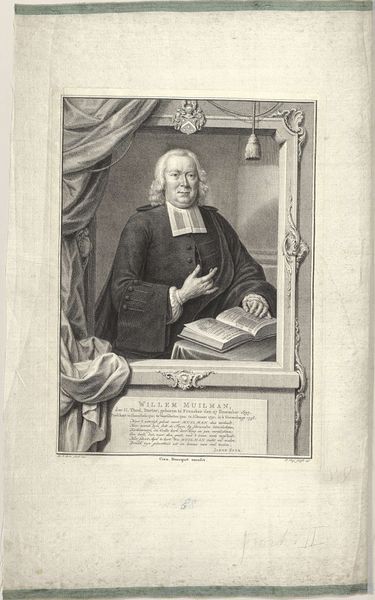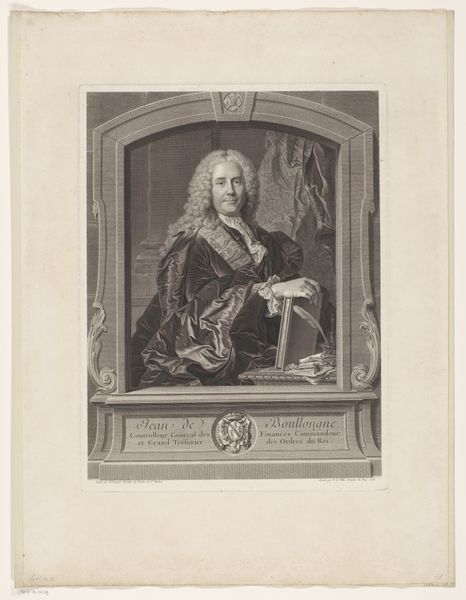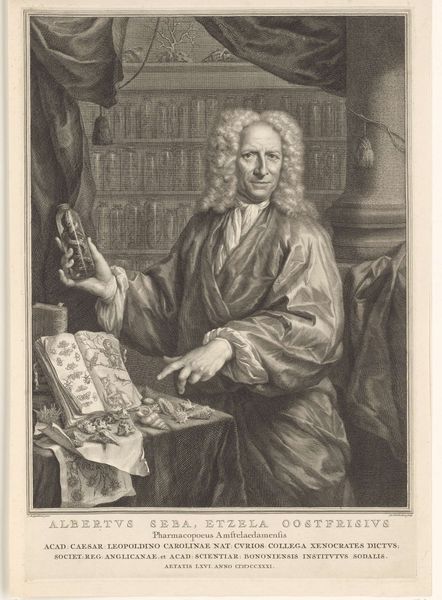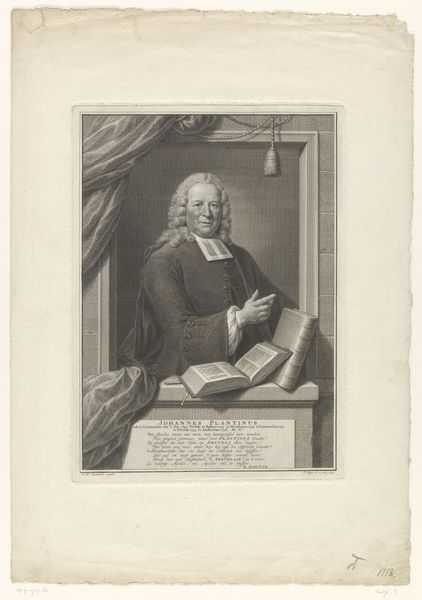
Dimensions: height 514 mm, width 397 mm
Copyright: Rijks Museum: Open Domain
Editor: This is "Portret van Charles Rollin," an engraving from 1763 by Jean-Joseph Baléchou. It strikes me as quite formal, with the subject posed rather rigidly. The detail is incredible given it’s an engraving. What formal elements do you notice in this piece? Curator: Certainly. Observe the crispness of the lines, achieving tonal gradations through careful cross-hatching, and the deliberate arrangement of forms to guide the eye. How does the artist utilize the contrast between light and shadow to articulate form and imbue the composition with dynamism? Note, for example, how light shapes the subject's face, then consider the dramatic rendering of the drapery, contrasted to the structured, formal qualities of the table. What principles of organization seem most prominent here? Editor: I see how the contrast makes certain elements stand out, like the face and the draped cloth. It also guides my eye from the writing on the bottom to the face of the subject. It also creates this sort of stage-like presence around the figure. The text grounds the entire portrait. It’s definitely eye-catching. Curator: Indeed. It introduces semiotic complexities. We can analyze the relationship between signifier – that is the subject himself as an image – and signified – the historical Charles Rollin. Baléchou does not present Rollin neutrally; the artist crafts a specific image of authority, linking the individual to concepts of literature and academia, a carefully cultivated persona meant to inform and influence viewers. And would you agree the composition is largely based on symmetry and verticality? How do these forms work to convey the overall sense of decorum? Editor: That’s interesting. The use of light to highlight the historical importance within this historical context is quite strategic. Looking closely, the printmaker makes good use of line quality for this formal baroque style. I never thought about engravings having their own unique language. Thanks for shedding light on this piece! Curator: It's through discerning such compositional structures that we start to comprehend the visual language artists use and the power that it has.
Comments
No comments
Be the first to comment and join the conversation on the ultimate creative platform.
